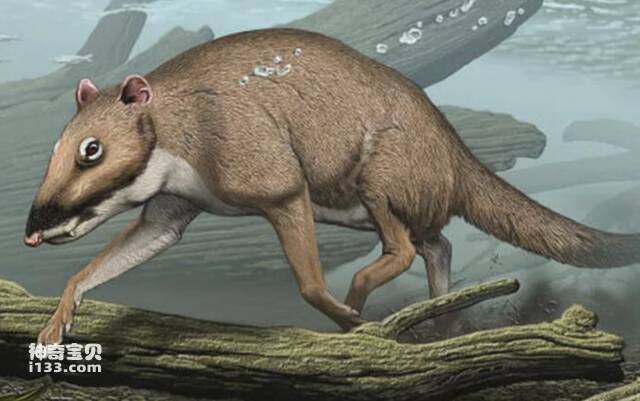Modern whales have smooth skin and streamlined body shapes. Their huge tails create huge waves in the sea water, pushing their bodies to swim freely in the sea. But did you know that in the distant geological time, whales were once terrestrial animals with well-developed limbs? The discovery of more and more paleontological fossils has confirmed this.

Scientists such as Severson from the School of Pharmacy at Ohio University in the United States unearthed a whale fossil with limb bones and foot bones in Pakistan. It dates from the Eocene Epoch 50 million years ago. This is the first time that the scientific community has discovered it. of ancient cetaceans with large functional hindlimbs. Berta, a paleontologist at San Diego State University, praised the discovery, saying "it shows us for the first time a whale with fully developed hind limbs. This animal obviously uses its hind limbs to move."
Scientists believe that modern whales originated from carnivorous four-legged mammals. The ancestors of these whales were somewhat like large wolves, which once roamed and tracked prey on the continent at that time. It was not until 57 million years ago, at the beginning of the Eocene Epoch, that these carnivores, under the pressure of survival brought by the arid living environment at that time, resolutely jumped into the sea to open up a new ecological niche. As a result, their The body undergoes profound evolution. Gradually, their limbs and pelvises degenerated, and their tails became stronger and became paddle-like to beat the sea water, thereby propelling these "sea monsters" to swim in the ocean.
Living whales no longer have hind limbs, and only a few species still retain toe-like bones, showing vestiges of degeneration of limb bones and hip bones, indicating that they evolved from terrestrial quadrupeds. Three years before the ancient whale fossils were discovered in Pakistan, Professor Gingerich of the University of Michigan reported that he had discovered whale fossils in Egypt that were 40 million years old, but the appearance of this whale was The limb bones are too slender and weak to help propel the trunk forward like terrestrial mammals. Professor Gingerich believes the animal's tiny hind limbs are used simply to hold on to its mate during mating.
If the fossil whale discovered by Professor Gingerich could almost spend its entire life in the water, then Seveson believes that the fossil whale he discovered in Pakistan has just been able to survive in an amphibious manner like a sea lion. The skeletal shape of the ancient Pakistani whale shows that its hind limbs were relatively weak, so it may have been able to drag its huge body along the ground with its delicate appendages like a sea lion. In sea water, its flat feet beat up and down to generate propulsion, which can make the body move forward in a wave shape, rather than swinging the body (mainly the tail) left and right like a fish. Modern whales also swim forward in waves, but they can already use their wide tails as propellers.
Professor Berta believes that paleontologists must collect more fossils and obtain more conclusive evidence to explain how this fossil whale swims. Because no pelvis or pelvic fragments were found in the fossils discovered by Severson, it is not yet certain how the limb bones and vertebrae of this type of whale are connected, which is a key factor in understanding the movement of this type of animal.
In any case, Severson's discovery was a great advancement for the study of early whale evolution. He connected a missing link in the evolutionary chain between aquatic whales and their terrestrial ancestors, just like the discovery of Archaeopteryx back then. play an important role in the early evolution of birds.
animal tags:
We created this article in conjunction with AI technology, then made sure it was fact-checked and edited by a Animals Top editor.